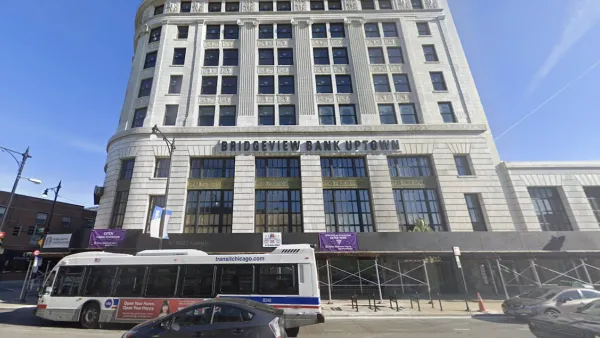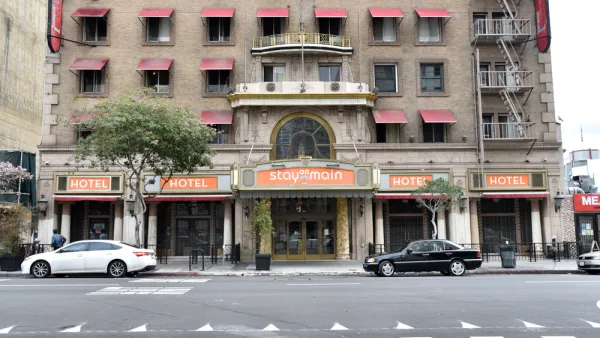Cities with ordinances aimed at making commercial-to-residential conversions easier are reaping the benefits.

The rise of commercial-to-residential conversions in Los Angeles reveals how easing permitting for adaptive reuse can yield positive results, writes Molly Bolan in Route Fifty. “Last year, the city accounted for 12% of the country’s adaptive reuse projects, creating more than 1,200 units, according to a recent report from Yardi Matrix, a commercial real estate research firm.”
Adaptive reuse isn’t new for the City of Angels, Bolan points out. “Los Angeles adopted its first adaptive reuse ordinance in 1999, making it easier for developers to convert underutilized commercial spaces into housing. The policy helped bring 12,000 residential units to the heart of the city.” In 2003, the city expanded the ordinance to include more neighborhoods outside of downtown, but large parts of the city still fall outside its purview, and only buildings built before 1975 are eligible.
Now, “City officials are looking to change that. A proposed update would expand the ordinance to cover the entire city, as well as reduce minimum unit size requirements and eliminate minimum parking requirements for projects within a half-mile of a major public transit stop.” The proposed update would apply to any building over 15 years old.
Bolan adds another example from a much smaller community: Kissimmee, Florida was home to 6 percent of the nation’s conversions last year, with hotels and motels accounting for a large part of this number. Because of the area’s tourist-commercial zoning rules, “developers don’t have to navigate a rezoning process and aren’t subject to public hearings.”
FULL STORY: How cutting red tape can encourage housing conversions

National Parks Layoffs Will Cause Communities to Lose Billions
Thousands of essential park workers were laid off this week, just before the busy spring break season.

Retro-silient?: America’s First “Eco-burb,” The Woodlands Turns 50
A master-planned community north of Houston offers lessons on green infrastructure and resilient design, but falls short of its founder’s lofty affordability and walkability goals.

Delivering for America Plan Will Downgrade Mail Service in at Least 49.5 Percent of Zip Codes
Republican and Democrat lawmakers criticize the plan for its disproportionate negative impact on rural communities.

Test News Post 1
This is a summary

Test News Headline 46
Test for the image on the front page.

Balancing Bombs and Butterflies: How the National Guard Protects a Rare Species
The National Guard at Fort Indiantown Gap uses GIS technology and land management strategies to balance military training with conservation efforts, ensuring the survival of the rare eastern regal fritillary butterfly.
Urban Design for Planners 1: Software Tools
This six-course series explores essential urban design concepts using open source software and equips planners with the tools they need to participate fully in the urban design process.
Planning for Universal Design
Learn the tools for implementing Universal Design in planning regulations.
EMC Planning Group, Inc.
Planetizen
Planetizen
Mpact (formerly Rail~Volution)
Great Falls Development Authority, Inc.
HUDs Office of Policy Development and Research
NYU Wagner Graduate School of Public Service





























